Living (with) the Dream
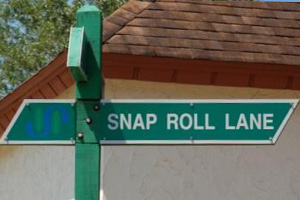
All streets here lead to the sky. (SOURCE: Nick Martini)
DAYTONA BEACH– All pilots spend more than their fair share of time at the airport. Some just hang around waiting to see something new come down from its lofty perch, while others spend hours at the edge of the hangar, swapping hair-raising tales and breath-taking stories about flights from years past.
Some individuals are even known to mow countless acres of grass just to watch airplanes come and go on lazy summer afternoons.
Whatever the reason, the local FBO sometimes seems like a “home away from home” for many pilots and enthusiasts. So what happens if the airport actually becomes home? Imagine the thrill of living a few feet from your airplane and wishing it “sweet dreams” every night from just down the hall.
In communities around the country, pilots are doing just that — living with their airplanes in subdivisions centered on an airfield. However, very few airparks have managed to build such a stunning reputation as the Spruce Creek Fly-In Community just outside of Daytona Beach, Florida. Here residents are living the good life and they know it!
Spruce Creek has not always been a popular home (both literally and figuratively) for the general aviation community and its followers. In the 1940s, long before elegant Gulfstreams and Extras graced the field, it was utilized as a training base for naval aviators. Many fields were developed by the Navy during this time simply for a new place to land airplanes and teach pilots. When the Navy no longer needed an airfield, they would give it to the nearest municipality, in this case, it was Daytona Beach.
However, by this point in history, Daytona Beach already had an established airport, so the city offered it to a small Miami-based aviation college named Embry-Riddle that was looking for a place to relocate. After a “thanks but no thanks” from Embry-Riddle, 1600 acres of Florida land were sold to a few Atlanta businessmen for $175,000. Today, the Spruce Creek Fly-In Community is home to hundreds of aviation enthusiasts from around the world.
At Home
At Spruce Creek, there are two main types of homes; taxiway homes and non-taxiway homes. The first, and probably most expected, are taxi-way homes. These homes, ranging from 1,500 to 15,000 square feet litter the property almost endlessly. You’ll be surprised to find that not all homes look the same. In fact, they are almost as architecturally different as the airplanes — I mean people, who live there.
Some homes maintain a contemporary feel with brick facades and shingled roofs yet co-mingle with Mediterranean-themed mansions and French chateaus. One home in particular, has its very own observation post which could easily be mistaken for a control tower.
As you make your way around the community, don’t be surprised to see a Pilatus PC-12 or perhaps a World War II era Grumman Goose tucked away between a few cars. And, not all hangars hold airplanes. Some of the hangars in the community are used as ballroom dance floors, or to hold a collection of pinball machines. Others have been converted into a playground for grandchildren.
One home has a feature straight out of a Popular Mechanics magazine. “Plane-ports”, as they are called, have overhangs built on to store an aircraft under a shelter, but without the bulk or square-footage of a hangar.
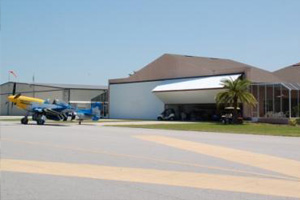
A house right on the taxiway. (SOURCE: Nick Martini)
The taxiways homes in particular, have held their value in the recent downturn in the housing market. But even a house without direct taxi-way access doesn’t prevent a pilot from flying–Spruce Creek has the option to buy or lease hangars and parking spaces to help keep residents in the air.
A Community and More
Spruce Creek has much more to offer than just living with your airplane. There is an 18-hole golf course, and country club, with its very own salon. The community also has an impressive commercial area which is home to numerous businesses including two used car dealers, an FBO, new and used aircraft dealers, and three full service mechanics (just in case the 200 licensed A&Ps who actually live in Spruce Creek don’t have the right tools).
“It’s great,” said Ken Renner, a realtor for Spruce Creek Fly-In Realty. “I have a 3-minute commute to work every day.” Other services and amenities make it convenient to renew your medical certificate, and grab a bite to eat.
What makes Spruce Creek one of the best communities to live in is the sense of community itself. “You can be as open or as private as you want”, according to Renner. “Leave your hangar or cowling open, and you’re bound to have a visitor.”
This kind of environment makes it a great place for those interested in building their own sport, experimental or ultra-light aircraft. Which is probably why there are over 40 RV-8s and a dozen RV-4s either flying, or being built in hangars throughout Spruce Creek.
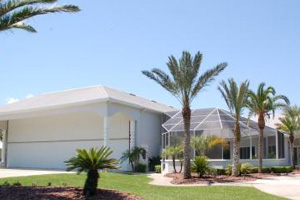
To be an airpark, there has to be a runway. (SOURCE: Nick Martini)
The most important aspect of an airpark of course, is the runway. With out it, you would really just have a bunch of people with planes parked in oversize garages. Spruce Creek’s runway belongs to the residents. Everyone has an equal share and it takes a 90% vote from the community (both non-taxiway homes and taxiway homes) to make changes for its use.
Renner suggested to make sure you know who owns the runway at any fly-in community where you choose to roost. Helicopters for example, are allowed to land, take-off and reside at Spruce Creek, but they may not hover-taxi from their personal hangar to a take-off facility.
Here, you may find yourself trimming your hedges next to aviation celebrities like Mark Martin, the Lear’s, and Loran’s. And, some residents will always be a part of the community — Spruce Creek has its very own cemetery at the end of the runway that dates back to the 1800s!
— David McCartney is a native of Pensacola, Florida and is currently at Embry-Riddle Aeronautical University in Daytona Beach studying Aeronautical Science. He holds his private and instrument license and is a Midshipman in the NROTC program. Email: mccartd1@erau.edu
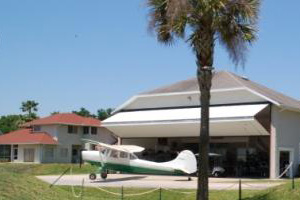
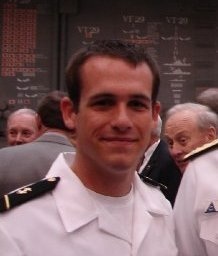
Sorry, the comment form is closed at this time.